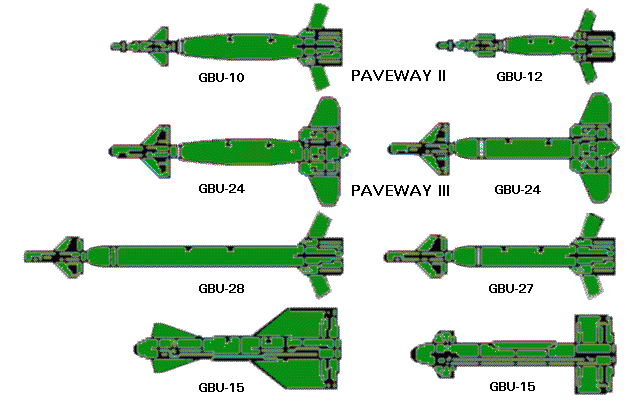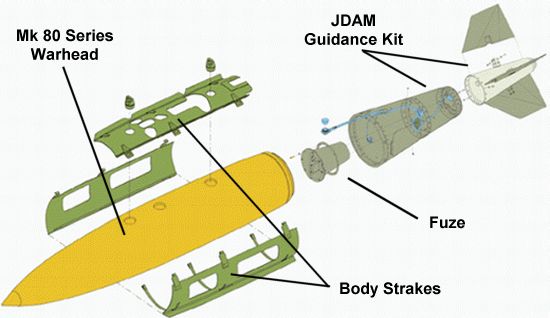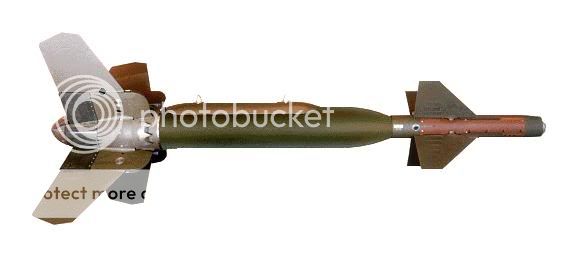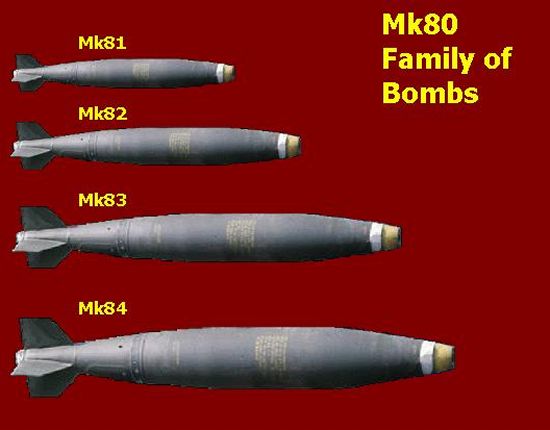Manticore
RETIRED MOD

- Joined
- Jan 18, 2009
- Messages
- 10,115
- Reaction score
- 114
- Country
- Location
"In World War II it could take 9,000 bombs to hit a target the size of an aircraft shelter. In Vietnam, 300. Today we can do it with one laser-guided munition from an F-117."
USAF, Reaching Globally, Reaching Powerfully: The United States Air Force in the Gulf War (Sept. 1991), p. 55
With the assistance of build-up guidance kits, general GP bombs are turned into laser-guided bombs (LGBs). The kits consist of a computer- control group (CCG), guidance canards attached to the front of the warhead to provide steering commands, and a wing assembly attached to the aft end to provide lift. LGBs are maneuverable, free-fall weapons requiring no electronic interconnect to the aircraft. They have an internal semiactive guidance system that detects laser energy and guides the weapon to a target illuminated by an external laser source. The designator can be located in the delivery aircraft, another aircraft, or a ground source.
All LGB weapons have a CCG, a warhead (bomb body with fuze), and an airfoil group. The computer section transmits directional command signals to the appropriate pair(s) of canards. The guidance canards are attached to each quadrant of the control unit to change the flightpath of the weapon. The canard deflections are always full scale (referred to as "bang, bang" guidance).
The LGB flightpath is divided into three phases: ballistic, transition, and terminal guidance. During the ballistic phase, the weapon continues on the unguided trajectory established by the flightpath of the delivery aircraft at the moment of release. In the ballistic phase, the delivery attitude takes on additional importance, since maneuverability of the UGB is related to the weapon velocity during terminal guidance. Therefore, airspeed lost during the ballistic phase equates to a proportional loss of maneuverability. The transition phase begins at acquisition. During the transition phase, the weapon attempts to align its velocity vector with the line-of-sight vector to the target. During terminal guidance, the UGB attempts to keep its velocity vector aligned with the instantaneous line-of- sight. At the instant alignment occurs, the reflected laser energy centers on the detector and commands the canards to a trail position, which causes the weapon to fly ballistically with gravity biasing towards the target.
http://www.defence.pk/forums/wmd-missiles/104441-quasi-ballistic-missiles.html
http://www.defence.pk/forums/wmd-missiles/99968-medium-range-ballistic-missiles.html
http://www.defence.pk/forums/wmd-missiles/107870-laser-guided-bombs.html
http://www.defence.pk/forums/wmd-missiles/103666-guided-missiles-working.html
http://www.defence.pk/forums/wmd-missiles/19447-air-air-missiles-command-air.html
http://www.defence.pk/forums/wmd-missiles/99878-standoff-missiles.html
http://www.defence.pk/forums/wmd-missiles/120722-anti-tank-missiles.html
http://www.defence.pk/forums/wmd-missiles/121369-military-reentry-vehicles.html
http://www.defence.pk/forums/wmd-missiles/3498-icbms-intercontinental-ballistic-missiles.html
http://www.defence.pk/forums/wmd-missiles/20716-surface-air-missile.html
http://www.defence.pk/forums/wmd-missiles/120722-anti-tank-missiles.html





























